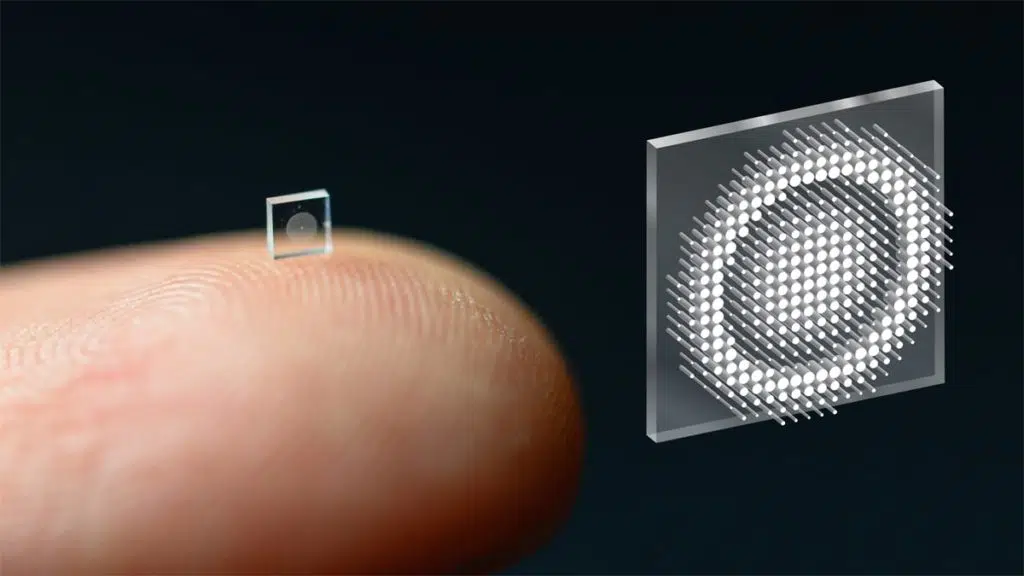
Researchers at Princeton University and the University of Washington have developed an ultra-compact camera that appears to be ideal for spies and voyeurs.
As detailed in an article on Princeton’s engineering site, the camera, which leverages a technology called a “metasurface,” measures similar to the size of a single grain of salt. Unlike traditional cameras that rely on curved glass or plastic lenses to create images, this tiny metasurface camera uses 1.6 million cylindrical posts (“each roughly the size of the human immunodeficiency virus (HIV)”) for optics.
From Princeton University:
Each post has a unique geometry, and functions like an optical antenna. Varying the design of each post is necessary to correctly shape the entire optical wavefront. With the help of machine learning-based algorithms, the posts’ interactions with light combine to produce the highest-quality images and widest field of view for a full-color metasurface camera developed to date.
A key innovation in the camera’s creation was the integrated design of the optical surface and the signal processing algorithms that produce the image. This boosted the camera’s performance in natural light conditions, in contrast to previous metasurface cameras that required the pure laser light of a laboratory or other ideal conditions to produce high-quality images, said Felix Heide, the study’s senior author and an assistant professor of computer science at Princeton.
“It’s been a challenge to design and configure these little nano-structures to do what you want,” said Ethan Tseng, a Princeton computer science Ph.D. student who co-led the study. “For this specific task of capturing large field of view RGB images, it was previously unclear how to co-design the millions of nano-structures together with post-processing algorithms.”
“Although the approach to optical design is not new, this is the first system that uses a surface optical technology in the front end and neural-based processing in the back,” commented Mait-Optik’s Joseph Mait, a former senior researcher and chief scientist at the U.S. Army Research Laboratory who was not involved in the study.
“The significance of the published work is completing the Herculean task to jointly design the size, shape and location of the metasurface’s million features and the parameters of the post-detection processing to achieve the desired imaging performance,” Mait noted.
Source: Princeton University

